The real treasures were the friends they made along the way
I feel as though there are going to be two distinct opinions of Dragon Quest Treasures, the new Switch-exclusive Dragon Quest spinoff starring Echoes of an Elusive Age‘s Erik and Mia. The first is that the game is an enjoyable treasuring-hunting romp with hours of content, a unique combat experience, and the type of what-will-I-find-next obsession that drives people to empty their bank accounts into loot boxes and gacha. The second is that it’s a $60 busy-work simulator, where all you do is complete mundane tasks to progress through a mundane adventure.
Both perspectives fit the bill here, and whether or not you see this game as a cavort or a chore is really going to come down to your tolerance level for a game built on backtracking. Because, believe me, In Dragon Quest Treasures, you’ll be visiting the same locations a lot.
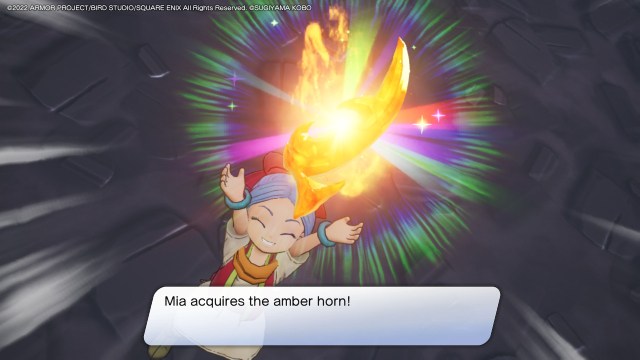
Dragon Quest Treasures (Nintendo Switch)
Developer: Tose Co.
Publisher: Square Enix
Released: December 9, 2022
MSRP: $59.99
Set in a world where the bodies of dead dragons have given life to new landmasses, Dragon Quest Treasures sees siblings Erik and Mia teaming up with a couple of cute flying critters as they attempt to recover each of the Dragon Stones. Those, however, are largely a McGuffin, as the true goal of this game is to amass as many riches as possible while building the mightiest treasure-hunting crew in the land. The game will tell you your main goal is to find those stones, but it’s easy for them to take a backseat as you build up your war chest.
Building a competent crew requires some recruiting. You’re given a small team at the start of the game, taking control of Mia as you search for Erik in this strange new world. But it isn’t long before you’ve set up base camp at an abandoned train station and started growing to your roster. As you defeat monsters in the field, some will ask to join your squad. To onboard them, you’ll have to spend the materials you harvest in order to cover their fee. The better the monster, the higher their fee will be.
While the Dragon Quest series does have an extensive roster of monsters to pull from, the variety of available creatures in Treasures is quite small, with only a handful of monster breeds present, each divided into a few types. Some creatures are new to the series, such as the desert-dwelling Marble Slime, but I would have liked to have seen more of this franchise’s history represented here. Of course, the actual monster breeds and types don’t matter all that much outside of aesthetics. What’s really important in Treasures is each monster’s Forte and Favorite Treasure.
Fortes are skills monsters possess to help you in your search for treasure. Depending on what three monsters you have in your team, you’ll be able to jump to high places, glide to the ground below, sink underground to reach tight spaces, or race across the environment. There’s also a Forte that helps you locate materials for crafting, but I can’t remember a moment my the 45 hours of playing this game that I used that particular skill.
Treasure, that is what you are
A monster’s Favorite Treasure is how you’ll actually go about finding the best treasures scattered across the land. Each time you return to your base camp, you’ll be given a new Treasure Forecast. This will dictate what kind of treasure will be in each area. If the monsters on your team have Favorite Treasures that match those in the Treasure Forecast, you’ll earn a high Golden Ratio. The higher this is, the easier it will be to track down high-quality valuables.
As you venture through each of the game’s five lands, little gold chests will pop up over your monsters’ heads to indicate a nearby valuable treasure location. When you are in the right spot, you can use your compass to generate three images of where the treasure is buried. The higher your Golden Ratio, the clearer and more obvious those pictures will be. With some quick digging, you’ll retrieve the treasure that can be appraised as soon as you get back to your base camp. And that is where the feeling of busy work can really sink in.
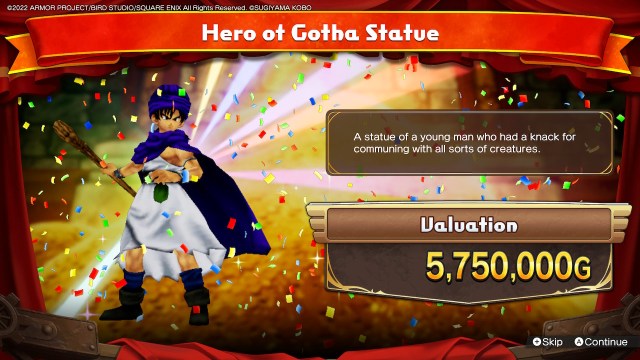
Monsters can only carry a few pieces of treasure each, and if you fill up on bric-a-brac–less valuable treasure that is easier to find–you’ll be running back and forth between your base camp and the rest of the world an awful lot. Bigger monsters can carry more loot, but even if you surround yourself with nothing but big boys, you can fill up on treasure in as little as 15 minutes before you’re backtracking to the closest available train station so you can empty your pockets and set out again.
Not only can the constant back and forth get a little tedious, but some of the requests you have to fulfill can also lead to tasks on top of tasks. One of the first monsters I recruited to my base camp would only join if I recruited a different monster beforehand. To get that monster, I had to find one that wanted to join my ranks, and then I had to get the items to cover its fee. That meant another trip back out into the world to track down this one piece of material.
Thankfully, those types of multi-step side quests are few and far in between. For the rest of the game, I was plumb happy with just finding my way around the world, digging up treasure. As my collection grew, other treasure-hunting gangs would try and hunt me down or pillage my base camp, but dispatching them usually wasn’t much of a problem. Especially when I finally gained the muscle memory for Dragon Quest Treasure’s combat.
Combat straight out of ’90s Bart Simpson
Unlike the mainline series, Treasures is an action RPG. Your monster crew will attack on their own, and while Erik or Mia can melee attack enemies with their daggers, they are far more useful as support characters. Both are armed with a slingshot, which this game calls a catapult because, of course, Treasures uses the Queen’s English (or should it be called the King’s English now?). The slingshot fires pellets that can hurt the enemy or heal and buff your monsters. The controls for this do take some getting used to, as the button layout isn’t as intuitive as it should be, but smart pellet play can quickly put an end to potentially difficult battles. They can also help you avoid combat altogether.
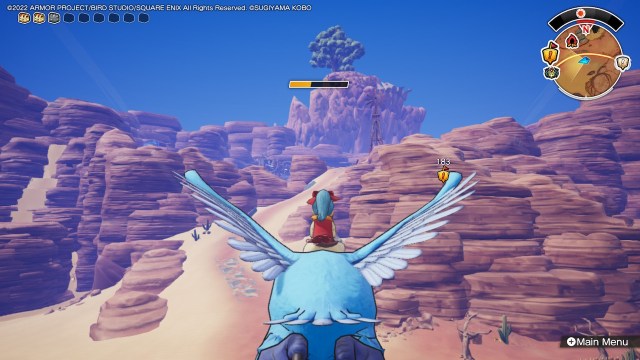
What I really appreciate about Treasures is how it gives me options on how I can approach a situation, and makes it possible to stand down higher-level enemies with simple planning. Some of the pellets you unlock can put monsters in the field to sleep or stun them, allowing you to sneak around them or steal whatever treasure they’re holding without getting pummeled. Now, the AI for your monster squad will often engage sleeping enemies, but usually only if they’re of a lower or equal level. Your monsters may also have a tendency of getting stuck behind barriers, and it would be nice if the feature that teleports stuck monsters to your side worked more efficiently. But that’s an issue I can deal with. One disappointment that’s harder to look past is the Snarl.
At your base camp, one of the Orc monsters you recruit will dig through a building known as the Snarl. As they dig down, they unlock portals to new areas you must complete to find hints on where you can find the Dragon Stones. These areas are nothing more than a series of challenge rooms, which is arguably one of my least favorite elements from RPGs. The monster dens you find throughout the world are the same, and while those dens are optional unless you’re going for 100% completion, unlocking the full extent of the Snarl is mandatory if you want to see the story through to its conclusion.
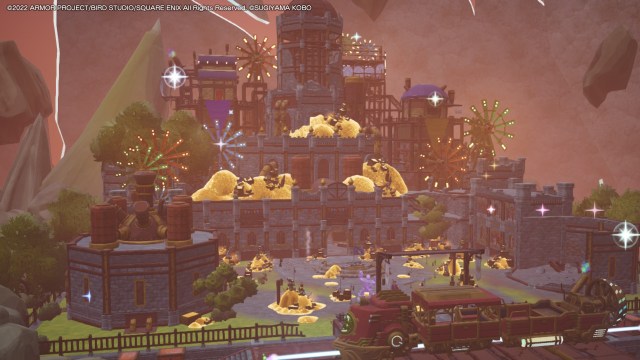
In hindsight, the time it took me to beat each set of challenge rooms in the Snarl was easily less than 30 minutes. In the grand scheme of things, they’re not a massive part of the game, and for some people, they might be the only enjoyable aspect. As I said in the lede, I can easily see how somebody could play Dragon Quest Treasures and walk away with the opinion that it’s nothing but busy work and backtracking. If that’s the prevailing impression out there, I get it; I just don’t agree with it.
Maybe it’s the Dragon Quest charm, or maybe it’s because I’m happy to be playing a game way less buggy than the last one I reviewed, but I got a kick out of Dragon Quest Treasures. This is the type of game I will happily sink hours into without caring about whether or not I’m actually progressing beyond just building up my cache. A perfect game for those long winter nights, Dragon Quest Treasures will more than tide me over until Square Enix finally gets around to releasing Infinity Strash.
Or Dragon Quest XII: The Flames of Fate. Whichever comes first.
[This review is based on a retail build of the game provided by the publisher.]

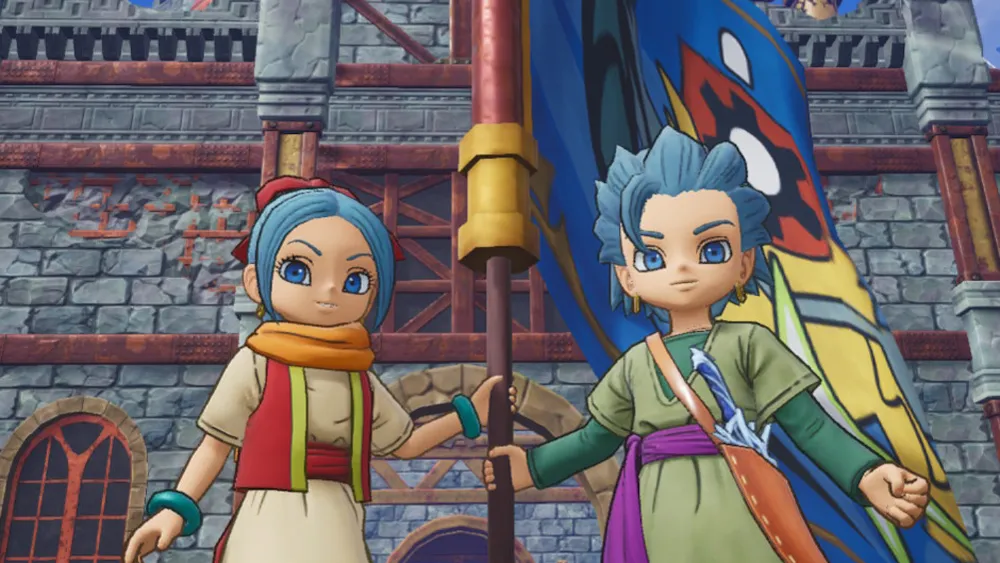




Published: Dec 8, 2022 09:00 am